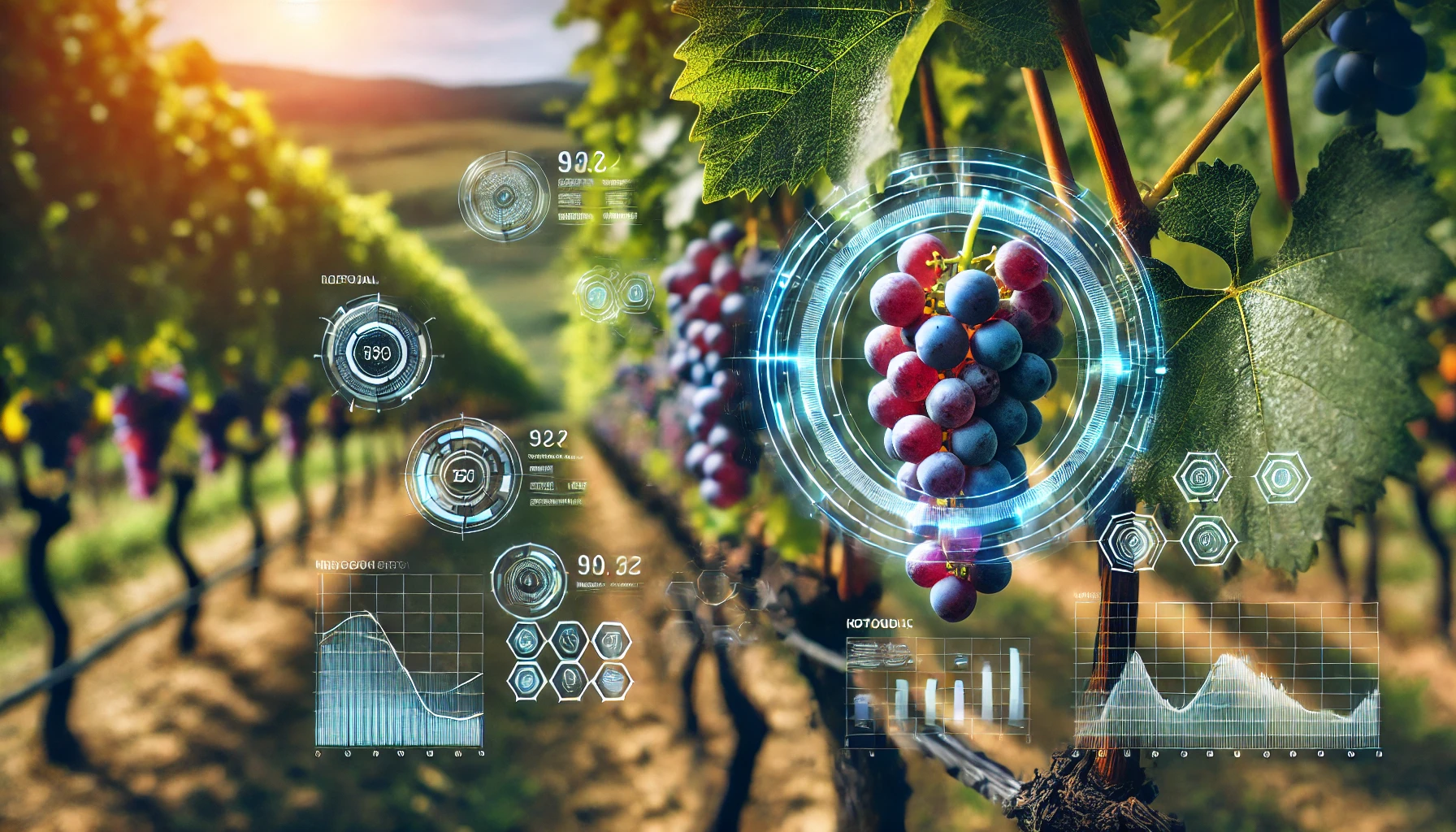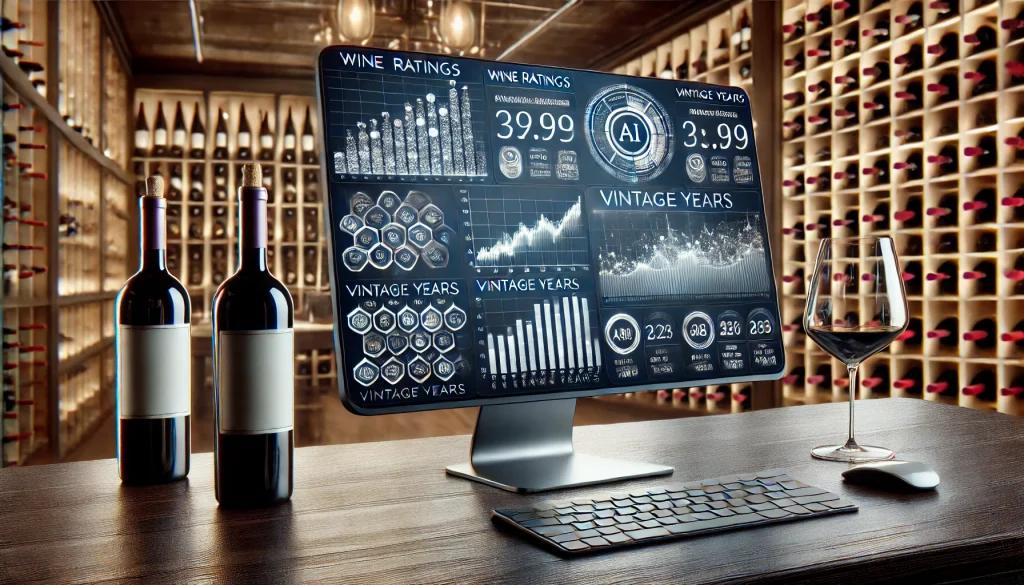
Choosing the perfect bottle can be like hunting for hidden treasure. The best wine investments aren’t just delicious; they hold their value, even appreciating over time. But finding these gems has traditionally relied on expertise, experience, and even a bit of luck. Today, though, there’s a new player in the game: Artificial Intelligence (AI). Algorithms are moving from Silicon Valley into wine cellars, offering collectors new tools to help pick the next big investment. But can AI really pick the best bottles for you? Let’s see how AI works in wine investment, the pros and cons, and whether algorithms can truly outperform human intuition.
1. The Basics of Wine Investment
Before we jump into the role of AI, it’s worth understanding what makes a wine “investment-worthy.” Wine’s value appreciates based on factors like rarity, quality, vintage, and region. A classic example? Bordeaux wines. Their reputation for high quality and aging potential often makes them top investment picks.
But there’s more to it. Wines age differently depending on how they’re stored, the grape’s properties, and even the vineyard’s climate in that particular vintage. Investors need to consider these factors, aiming for wines that peak at a high price point and maintain their value. Traditionally, this selection process relies on sommeliers, critics, and experienced wine investors.
2. The Rise of AI in Wine Investment
Now, here’s where AI steps in. Artificial intelligence can analyze enormous amounts of data quickly, far beyond human capacity. In the case of wine, AI-driven algorithms sift through details on thousands of wines, spanning decades of historical data. They can track reviews, weather patterns, wine scores, pricing trends, and even consumer preferences. Think of AI as a digital sommelier with a photographic memory, endless stamina, and no bias (at least, theoretically).
Some companies already specialize in AI-driven wine investment advice. Vinovest, for example, uses machine learning algorithms to assess which wines are likely to gain value over time. These algorithms consider everything from critic scores to production volumes to identify potentially lucrative wines. Platforms like these give wine investors more data than ever before, packed into user-friendly software.

3. How AI Picks Wines: A Peek Inside the Algorithm
AI algorithms use several techniques to evaluate wine. Here’s a simplified breakdown of what they analyze:
- Vintage Quality: AI compares historical vintages to estimate how well a particular year might age. The algorithm might, for instance, compare a 2015 Bordeaux to similar wines from the past that experienced similar weather patterns, grape yields, and other conditions.
- Wine Scores and Reviews: Algorithms also aggregate scores from wine critics and reviews, finding correlations between high-scoring wines and long-term value. If a wine consistently scores 95+ from top critics, AI identifies it as more likely to appreciate.
- Supply and Demand Trends: Scarcity and popularity drive prices up. AI tracks market demand, consumer interest, and supply dynamics. If a certain region becomes trendy, such as Napa Valley Cabernet, the algorithm predicts price increases.
- Weather Data: Believe it or not, algorithms even use climate data. A hot, dry season often creates bold, structured wines that age well, while a cool, rainy year might signal wines that mature faster.
- Secondary Market Performance: AI also monitors the resale market, comparing how similar wines have performed over time. If wines from a certain estate have steadily appreciated, the AI might flag similar estates as good investments.
Each of these factors contributes to the “score” or “potential” that AI assigns to a wine. For the investor, it’s a lot of hard-to-track information distilled into an easy-to-read summary.
4. Advantages of Using AI in Wine Investment
- Data-Driven Decisions: AI uses raw data, helping to minimize biases. Traditional investors might let personal preferences for a region or variety influence choices. AI, however, simply follows the numbers.
- Efficiency and Speed: An algorithm can analyze a wine in seconds, whereas human research might take hours or days. With AI, investors can act faster on opportunities.
- Historical Insight: AI can reference decades of data instantly, drawing from a broader pool of information than even the most seasoned expert.
- Risk Reduction: By using data patterns, AI can help avoid wines with historically volatile prices or wines likely to peak and decline quickly.
These advantages make AI appealing, especially for investors who are new to wine and looking for guidance without the need for years of expertise.
5. The Downsides: Where AI Falls Short
Despite these benefits, AI in wine investment isn’t perfect. Some aspects of wine appreciation and investment are challenging for algorithms to capture:
- Human Taste and Nuance: Wine is as much an art as it is a science. AI can’t taste or experience wine the way a human can, meaning it might miss qualities that contribute to a wine’s prestige and desirability.
- Outliers and “Unpredictable” Wines: Some wines are legendary precisely because they defy the odds. A small producer might create a rare, exceptional wine one year that skyrockets in value. This kind of rarity is tough for AI to anticipate, as algorithms often rely on predictable patterns.
- Emotional Connection: Part of what makes wine investment unique is its personal aspect. Collectors often value wines because of personal experiences with the region, winery, or vintage. An algorithm doesn’t “connect” with a wine; it just runs calculations.
- Over-Reliance on Trends: If everyone uses AI and follows its advice, certain wines could become overvalued. Just like in stock markets, trends can create bubbles. If AI flags a particular vintage, and everyone rushes to buy it, prices might inflate artificially.
6. AI Versus the Experts: Who’s Winning So Far?
In recent years, data from AI-driven platforms has shown promising results. Some algorithms correctly predicted the rise in value of specific wines, proving they can compete with seasoned experts. However, traditional investors still maintain an edge in certain areas. Human critics, for instance, are often better at evaluating limited-production wines or experimental varieties. And in cases where emotional value plays a role, human collectors still hold sway.
A balance between human intuition and AI-driven insights appears to be the sweet spot. Many successful investors use AI as a tool, not as a replacement. They analyze AI recommendations but ultimately make the final call based on personal judgment.

7. Should You Trust AI with Your Wine Investments?
So, should you rely on AI for your wine investments? The answer depends on your goals. For new investors, AI can be incredibly helpful. It provides a starting point, offering guidance without the need for years of experience. For seasoned investors, AI is a supplementary tool, bringing in insights that enhance, but don’t replace, expert opinion.
If you’re new to wine, AI might help you avoid common beginner mistakes, like investing heavily in trendy wines that don’t age well. For seasoned collectors, AI might reveal overlooked opportunities or confirm suspicions about certain wines.
The bottom line? AI can pick promising wines, but the best investments still benefit from a human touch.
8. A Glimpse into the Future of AI in Wine
AI’s role in wine investment is just beginning. In the future, we might see AI applications that even incorporate sensory data. Imagine an algorithm that can “taste” wine by analyzing its chemical composition! The future might also bring hyper-personalized wine recommendations that account for individual taste preferences and align them with investment goals.
Moreover, with advancements in blockchain and wine NFTs, AI may soon track wine provenance with unprecedented accuracy, further reducing the risks of counterfeits and providing secure verification of authenticity for high-value wines.
9. Final Thoughts: Finding Balance with AI and Personal Expertise
Artificial intelligence is changing the landscape of wine investment, providing data-driven insights that can guide decision-making. But wine isn’t just data on a spreadsheet. It’s culture, experience, and often, a touch of magic.
So, can algorithms pick the best bottles for you? In many cases, yes. But like a good wine, the best investment strategy combines the technical with the personal. Use AI to open doors, but trust your instincts to walk through them. After all, in wine investment, as in wine itself, balance is everything.